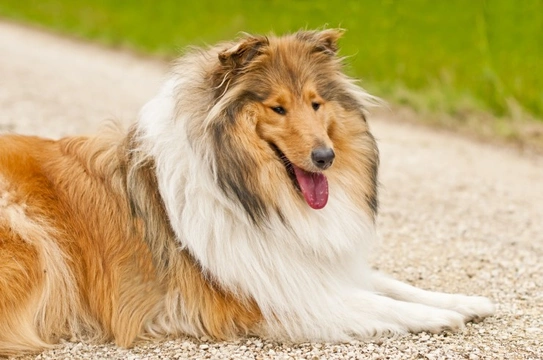
Progressive retinal atrophy RCD2 testing for rough and smooth collies
Progressive retinal atrophy is one of the most widespread hereditary health conditions in dogs that affects the eyes, and it leads to a gradual and irreversible blindness. While the condition can only be inherited through parent dogs that are affected by the condition or carriers for the faulty gene mutation that causes it, it is widely enough spread across the gene pools of a relatively high number of different breeds, to the point that it poses a significant risk to the wider health of said breeds as a whole.
Whilst progressive retinal atrophy ultimately leads to blindness in dogs affected, several different gene mutations can cause the condition, and each of them work in different ways. Because there is no way to treat or reverse blindness caused by progressive retinal atrophy, the only way to keep the condition from spreading widely across affected breeds and so, affecting more dogs is to ensure that dogs that are carriers for one of the gene mutations that cause the problem are tested for it prior to breeding, and affected dogs removed from the breeding pool.
In this article, we will look at the RCD2 form of progressive retinal atrophy in dogs, what sort of dogs are affected by the condition, and how testing works. For more general information on progressive retinal atrophy and how it can affect dogs, check out this article.
What is RCD2 progressive retinal atrophy?
The RCD2 variant of progressive retinal atrophy affects the rods and cones of the eyes-the areas of the retina responsible for receiving light and colour messages, and transmitting them to the brain where they are formed into the picture that constitutes what the dog sees.
The RCD2 variant of the condition is one of the fastest onset varieties of progressive retinal atrophy, and whilst many variants of the condition do not begin to present in dogs until they are at least three-or for some forms, much older-the RCD2 type may become symptomatic as early as six weeks of age, and by the time the dog is around twelve weeks old, they may well have lost all or most of their vision.
What sort of dogs are affected by the condition?
Progressive retinal atrophy RCD2 is a type of progressive retinal atrophy that affects certain collie breeds; specifically the rough collie and the smooth collie. This means that dogs of these two breeds are particularly at risk of developing the condition, and risk factors are also present in cross breed dogs that have partial ancestry from either the rough or the smooth collie.
Dogs that have inherited copies of the faulty gene that lead to the condition generally begin to show the early signs of their gradual progression to blindness when they are very young, and will generally begin to lose their night vision from around the time they are six weeks old-and so just a month or so after their eyes opened and they first gained their vision.
Often, affected dogs are completely blind by the time they reach twelve weeks old.
How does the heredity of the condition work?
RCD2 progressive retinal atrophy is an autosomal recessive condition, which means that if neither parent dog carries the gene, their offspring will neither become a carrier nor affected by the condition. If one parent dog is a carrier but the other is clear, there is a 50% chance for each of their offspring to become clear or a carrier themselves respectively.
If both parent dogs are carriers, 50% of their offspring will become carriers, 25% will be clear, and 25% will be affected by the condition.
If one parent dog is affected but the other is clear, all of the puppies will become carriers. If one parent dog is affected and the other is a carrier, half of their offspring will be carriers, and half affected. If both parent dogs are affected, all of their puppies will be affected too.
Testing for PRA RCD2 in dogs
Whilst the fact that progressive retinal atrophy RCD2 is fast in onset means that dog owners will know very early on if their dogs are affected by the condition and so are highly unlikely to attempt to breed from them, a significant number of dogs from the rough collie and smooth collie breeds may still be carriers for the gene that leads to the condition, even if they are not affected by the condition themselves.
For this reason, testing for PRA RCD2 is important in the two affected breeds, to ensure that carriers are not bred and so, do not pass on the gene.
The test for PRA RCD2 involves a sample of your dog’s DNA-usually taken by means of a cheek sample-being sent off to a laboratory for assessment. The cheek swab itself can be taken by your dog’s own vet, and for details of the laboratories that can perform the test, check out the list on The Kennel Club’s website.



